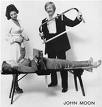 With the holiday season upon us, the performers of live theatre, circus, magic, and comedy shows are working their audience participation gambits to the max, despite the fact that most members of the public tend to shy away from being picked to help a magician out with a card trick or do a funny dance routine with a clown. But for those exhibitionists among us who quite like to get hauled up on stage every now and again, especially after having one too many yuletide eggnog cocktails, here are a few pointers to help improve your chances of earning a momentary place in the spotlight:
With the holiday season upon us, the performers of live theatre, circus, magic, and comedy shows are working their audience participation gambits to the max, despite the fact that most members of the public tend to shy away from being picked to help a magician out with a card trick or do a funny dance routine with a clown. But for those exhibitionists among us who quite like to get hauled up on stage every now and again, especially after having one too many yuletide eggnog cocktails, here are a few pointers to help improve your chances of earning a momentary place in the spotlight:
1. Wear flashy clothes. The performers will better be able to pick you out from the crowd.
2. If asked to show your willingness to volunteer by raising an arm, make sure you have something eye-catching protruding from the end of it, like a glittery fairy wand or light saber.
3. If the audience is collectively asked to select a volunteer based on some form of pre-screening, make sure you make yours racy or controversial, e.g. tell an anecdote that involves sex with animals. And if the voting takes place using a clap-o-meter, be sure to clap very quietly for any rivals.
4. Turn up at the theatre with someone of the opposite sex. For some reason, heterosexual couples are often audience participation targets.
5. Bury your face in your program or do whatever you can to look like you’d just about die if you were picked on. Reluctance is often a big turn on for performers, especially those that like a challenge.

 Had three classical music concert experiences this weekend, none of them “professional” in the standard sense of the word, but all of them encouraging in the sense that they demonstrate how great musicianship exists at the grassroots level in even the most adverse of financial climates. I’d like to share with you a few thoughts about each one:
Had three classical music concert experiences this weekend, none of them “professional” in the standard sense of the word, but all of them encouraging in the sense that they demonstrate how great musicianship exists at the grassroots level in even the most adverse of financial climates. I’d like to share with you a few thoughts about each one: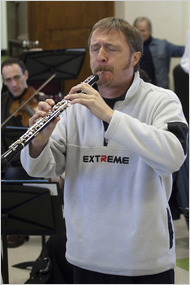 Three thoughts today aimed at three different audiences:
Three thoughts today aimed at three different audiences: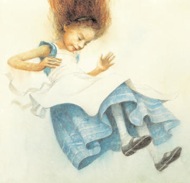
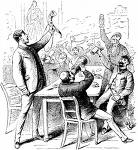 An
An 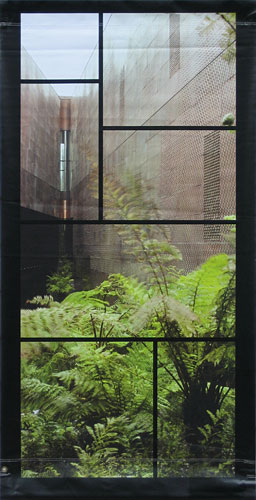 Like many cities in the US, San Francisco’s streets are lined with colorful banners advertising various cultural organizations and events. I wouldn’t be surprised if many people in this city owe their knowledge of the existence of The New Century Chamber Orchestra and the Disney Family Museum to the flying banners bearing the names of these organizations strapped to the tops of lampposts around town.
Like many cities in the US, San Francisco’s streets are lined with colorful banners advertising various cultural organizations and events. I wouldn’t be surprised if many people in this city owe their knowledge of the existence of The New Century Chamber Orchestra and the Disney Family Museum to the flying banners bearing the names of these organizations strapped to the tops of lampposts around town. During one of the brief entr’acte pauses in yesterday afternoon’s performance of Otello at
During one of the brief entr’acte pauses in yesterday afternoon’s performance of Otello at  The Great Dickens Christmas Fair
The Great Dickens Christmas Fair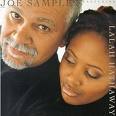 Joe Sample and Lalah Hathaway
Joe Sample and Lalah Hathaway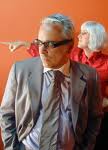 The Bald Soprano
The Bald Soprano Sing-a-Long Sound of Music
Sing-a-Long Sound of Music Ari Marcopoulos – Within Arm’s Reach
Ari Marcopoulos – Within Arm’s Reach


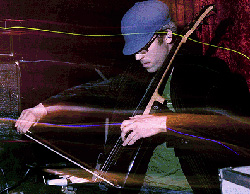 Cellos generally used to be found in orchestras and chamber music groups. But these days, the instrument seems to be appearing increasingly in other musical settings. And what’s really interesting about the advent of the cello on the bluegrass, electronica, folk and rock scenes is that the instrument is being played like it’s part of the percussion / rhythm section rather than the string section.
Cellos generally used to be found in orchestras and chamber music groups. But these days, the instrument seems to be appearing increasingly in other musical settings. And what’s really interesting about the advent of the cello on the bluegrass, electronica, folk and rock scenes is that the instrument is being played like it’s part of the percussion / rhythm section rather than the string section. I’m getting really tired of going to the theatre and witnessing plays that take pot shots at the most obvious people. Tony Kushner’s series of rambling, politically-slanted short plays currently playing at
I’m getting really tired of going to the theatre and witnessing plays that take pot shots at the most obvious people. Tony Kushner’s series of rambling, politically-slanted short plays currently playing at 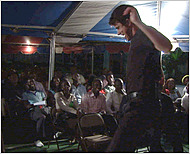 The San Francisco-based theatre artist Dan Hoyle’s
The San Francisco-based theatre artist Dan Hoyle’s